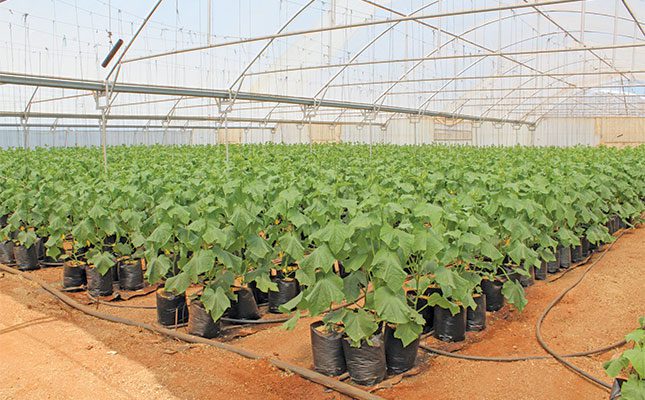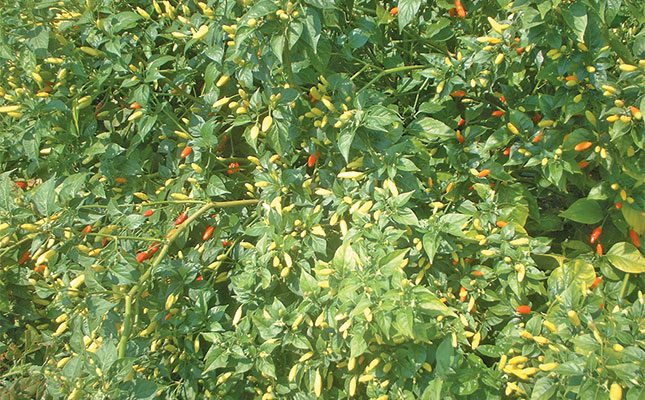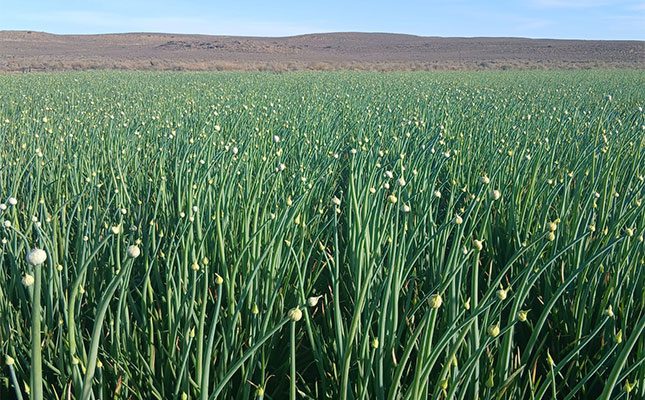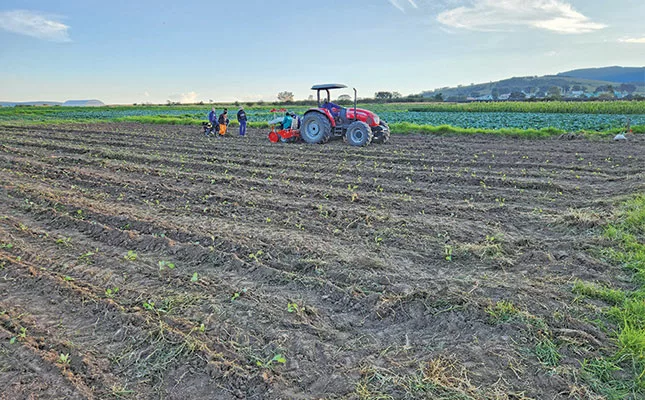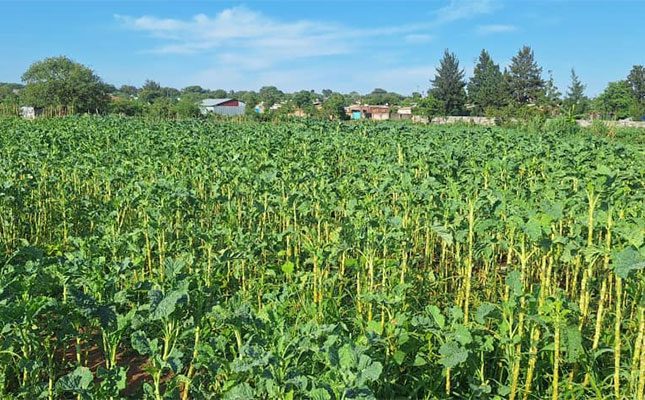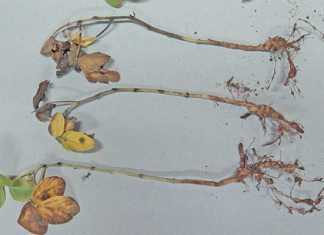
Photo: Bill Kerr
The house he purchased came with a fair amount of land.
He decided to develop a good-tasting squash big enough for a family to consume. Hubbard squashes were too big, in his opinion, while Halloween pumpkins were there for scaring people rather than eating.
So Leggett took a gooseneck squash, which was long and gangly, and crossed it with other squashes and made selections from there.
Butternut belongs to the species Cucurbita moschata. Our regular pumpkins are C. maxima; gems and marrows are C. pepo.
The Halloween pumpkin is C. pepo and will readily cross with gem squash. It is the usual origin of the giant gems we read about in the press.
When Leggett had completed the breeding process, he took the product to Waltham Field Station, where it created quite a stir.
As the interior was as smooth as butter and sweet as a nut, it was called the ‘butternut’. The variety name was then listed as ‘Waltham’ after the research station.
Leggett could not benefit from plant breeder’s rights, which were not in effect at the time. As far as I am aware, it was HL Hall and Sons in Nelspruit, now Mbombela, who put butternuts on the map in South Africa.
At one stage, the company grew an enormous amount of mixed vegetables and would send hampers by rail to many cities. HL Hall had a steam engine and guard’s van and all the trucks were filled with its own produce.
Because butternuts were not well known at the time, HL Hall basically flooded the market with them until they took off. Butternuts have increased in popularity in South Africa due to the poor quality of the other pumpkins available.
Originally, the white Boer pumpkin dominated the market. Then a seed company for which I worked sampled a grey hybrid pumpkin from New Zealand.
It performed very well and produced double the tonnage of the Boer pumpkins. My colleagues did not share my enthusiasm, however, saying the colour was wrong, the size too small and the seed price too high. But it was agreed that I could give it a try.
The mystery of hybrids
After harvesting some of the fruit, I went to the vegetable hall at the fresh market in Johannesburg to test the waters.
I left a pumpkin with each agent, explaining what it was. One of the bigger agencies did not even know what a hybrid was (this was many years ago).
After I explained the process to the representative, he said: “So it’s like crossing a horse with a donkey?”
“Something like that,” I explained.
After going down the line of agents, I returned to the first to enquire how his customers had responded. He ordered a few hundred bags.
I explained that it was not even commercial yet and we were simply gauging the response. When the grey hybrid finally took off, I was amazed to hear the agents talking about ‘these donkey pumpkins’ – and this is still the case.
Steadily waning popularity
The pumpkins were of exceptional eating quality and quickly took over. Then similar, higher-yielding varieties began to appear with much inferior eating quality, but which looked the same as the original variety to the housewife.
Inevitably, the popularity of pumpkins began to wane and they are now being replaced by butternuts, which have a better eating quality.
Our family and friends have not purchased a pumpkin for years on account of this and prefer butternuts or Hubbards when in season.

